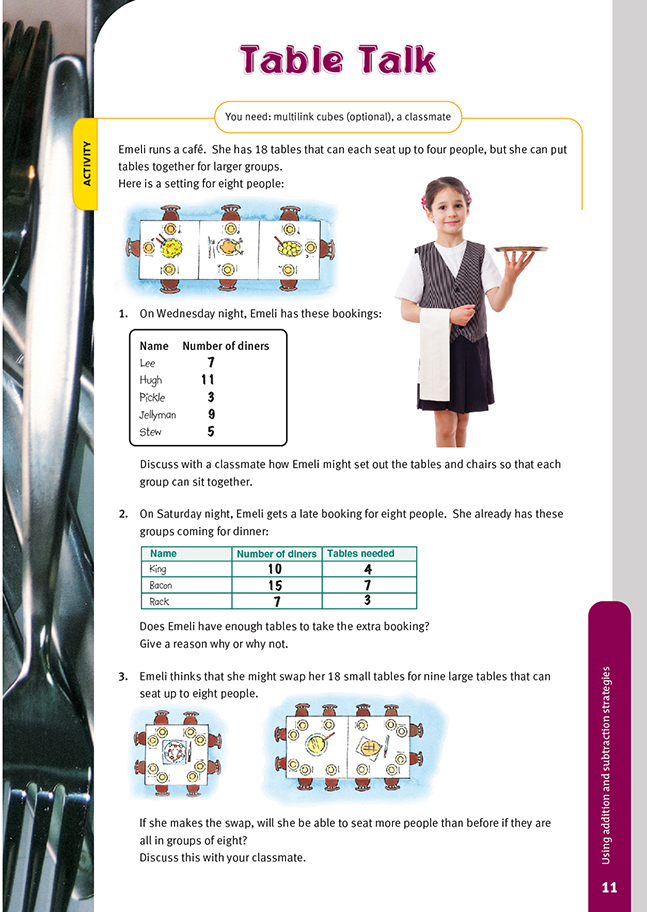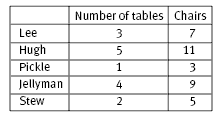This is a level 3 algebra link activity from the Figure It Out series.
A PDF of the student activity is included.
Click on the image to enlarge it. Click again to close. Download PDF (198 KB)
use addition and subtraction to solve problems
find a pattern to solve problems
FIO, Link, Number, Book One, Table Talk, page 11
Multilink cubes (optional)
A classmate
You can use the context provided in this activity as an opportunity to develop problem-solving skills as well as an opportunity to use addition and subtraction strategies. This activity also integrates some algebra with the number learning outcomes.
Question 1 encourages the students to explore possible ways of arranging the tables and how this relates to the number of people who can be seated in a group.
Help the students by asking questions such as “What happens when the tables are grouped in a line?”
Work with them to arrange a pattern like this:
Similarly, with a question such as “What happens when all the tables are separated?”, you can arrange a pattern like this:
The students’ discussion should show that when the tables are put together in a line, there are two chairs less for each additional table than when the tables are separated out. Encourage the students to explore further with questions such as “Are there other ways of grouping tables besides putting them in a line?”
Three tables can be arranged in a line to seat eight. Alternatively, they can be arranged in an L shape, but the students should consider whether two people can fit easily into the inside corner.
An L-shaped arrangement is more likely to seat seven comfortably:
Four tables can be arranged in a square, but this will still only seat eight:
Question 3 extends the investigation into the arrangement of patterns further still. Ensure that the students appreciate that 18 small tables arranged separately can seat 72. This is the same as nine large tables arranged separately, so it is the table groupings that cause the differences.
Arrangement of separate large tables:
Large tables in a line:
Note that by joining the large tables, you get four positions less with each join, which is less efficient than separate groups of eight. An interesting discussion point would be to consider the L-shaped arrangement of tables again in relation to the large tables. In this case, the configuration means that Emeli would lose as many seats as she gains.
Answers to Activity
1. Answers may vary. A chart for the least tables required would be:
2. Yes. Emeli will need 14 tables for the bookings that she already has and three tables for the new group of eight, a total of 17.
3. Yes. One large table will seat eight, but at present, Emeli needs three small tables to seat eight. So, she could seat 72 people in groups of eight (9 x 8) on the large tables but only 48 (6 x 8) using three small tables for each group.




